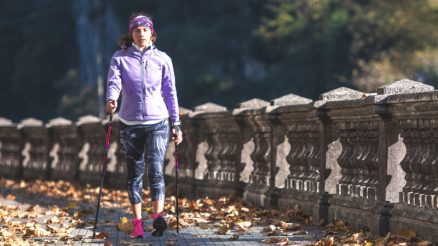Embarking on a long-distance walk or pilgrimage is an extraordinary journey, offering not just physical challenge but profound introspection and connection with nature and history. Whether you’re dreaming of the Camino de Santiago, the Appalachian Trail, or a local long-distance path, proper preparation is key to a rewarding and safe experience. It’s more than just putting one foot in front of the other; it’s about preparing your body, mind, and logistics for the adventure ahead.
Here’s a comprehensive guide to help you get ready for your epic walk:
1. Physical Preparation: Building Your Foundation
Your body is your most important tool on the trail. Don’t underestimate the physical demands of walking day after day.
- Start Early and Gradually: Begin your physical training at least 3-6 months before your trip. Don’t rush it.
- Walk, Walk, Walk: The best training for walking is walking!
- Increase Distance Gradually: Start with shorter walks and slowly increase your daily mileage. Aim to build up to walking consecutive days, mimicking your planned pilgrimage.
- Vary Terrain: Train on different types of terrain – hills, flat paths, rocky trails, paved roads – to prepare your muscles and joints for varied conditions.
- Back-to-Back Days: Practice walking on consecutive days to simulate the cumulative fatigue you’ll experience.
- Wear Your Gear: Always train with the backpack you intend to use, loaded with a realistic weight. This helps you get accustomed to the feel and identify any discomfort early. Wear the shoes you plan to use to break them in thoroughly.
- Strength Training: Incorporate exercises that strengthen your core, legs, and back. Lunges, squats, planks, and calf raises will be invaluable.
- Flexibility and Mobility: Stretching and yoga can help prevent injuries and improve your range of motion. Pay attention to hamstrings, quads, calves, and hips.
- Listen to Your Body: Don’t push through pain. Rest days are crucial for recovery and preventing overuse injuries.
2. Mental Preparation: Fortifying Your Mind
A long walk is as much a mental challenge as it is a physical one.
- Define Your “Why”: Understand your motivation. Is it spiritual, a personal challenge, a desire for solitude, or something else? Knowing your “why” will be a powerful motivator when things get tough.
- Embrace Discomfort: Accept that there will be moments of pain, boredom, and frustration. View them as part of the journey and an opportunity for growth.
- Practice Mindfulness: Learn to be present. The repetitive nature of walking can be meditative. Focus on your breath, the sounds around you, and the rhythm of your steps.
- Problem-Solving Mindset: Things will go wrong. Be prepared to adapt, find solutions, and maintain a positive attitude.
- Visualization: Imagine yourself successfully completing the walk, overcoming challenges, and enjoying the scenery.
- Manage Expectations: Not every day will be perfect. Some days will be hard, but the good days will make it all worthwhile.
3. Gear & Packing: Less is More
Every ounce counts when you’re carrying it for hundreds of miles.
- Backpack: Choose a comfortable, well-fitting backpack (30-50 liters for most pilgrimages). Get it professionally fitted.
- Footwear: This is paramount!
- Hiking Shoes/Boots: Opt for broken-in, comfortable, waterproof (if needed) hiking shoes or lightweight boots.
- Trail Runners: Many long-distance walkers prefer trail runners for their lighter weight and breathability.
- Camp Shoes/Sandals: Essential for airing out your feet at the end of the day.
- Socks: Invest in high-quality, moisture-wicking socks (wool or synthetic). Bring at least 2-3 pairs and change them daily.
- Clothing (Layering is Key):
- Base Layers: Moisture-wicking tops and bottoms (merino wool or synthetic).
- Mid-Layers: Fleece or down jacket for warmth.
- Outer Layer: Waterproof and windproof jacket and pants.
- Walking Trousers/Shorts: Quick-drying and comfortable.
- Underwear: Moisture-wicking.
- Sleeping Gear (if applicable): Lightweight sleeping bag or liner, depending on accommodation.
- First Aid Kit: Blister treatment (compeed!), pain relievers, antiseptic wipes, bandages, any personal medications.
- Navigation: Map, compass, GPS device/app, power bank.
- Hydration: Water bottles or hydration reservoir (2-3 liters capacity).
- Toiletries: Travel-sized essentials, quick-drying towel.
- Other Essentials: Headlamp, trekking poles, sun protection (hat, sunglasses, sunscreen), small knife, multi-tool, safety whistle.
- Packing Strategy: Lay out everything you think you need, then halve it. Only pack what is absolutely essential. Aim for your pack to be no more than 10-15% of your body weight.
4. Logistics & Planning: The Practicalities
- Route Research: Understand the path’s difficulty, elevation changes, available services (food, water, accommodation), and typical weather conditions.
- Accommodation: Decide if you’ll book ahead (recommended for popular routes or peak season) or walk and find accommodation daily. Research options like hostels, guesthouses, or camping.
- Budget: Estimate daily expenses for food, accommodation, and miscellaneous items. Carry some cash, especially for remote areas.
- Food & Water: Plan how you’ll resupply. Carry enough water for each section between sources. Pack high-energy snacks.
- Permits/Documentation: Check if any permits, visas, or specific pilgrimage credentials are required.
- Travel Insurance: Essential for medical emergencies, lost luggage, or trip cancellations.
- Inform Others: Let a trusted contact know your itinerary and check in regularly.
5. Health & Safety: Staying Well on the Trail
- Blister Prevention & Treatment: Address hot spots immediately. Carry a good blister kit.
- Hydration & Nutrition: Drink plenty of water and eat regularly to maintain energy levels.
- Sun Protection: Reapply sunscreen, wear a hat, and sunglasses.
- Insect Repellent: Especially important in warmer, humid climates.
- Emergency Plan: Know what to do in case of injury or severe weather. Carry a fully charged phone.
- Solo vs. Group: If walking solo, let people know your plans and be aware of your surroundings. Consider walking with others for sections.
- Leave No Trace: Pack out everything you pack in. Respect wildlife and natural environments.
6. On the Trail: Embracing the Journey
- Pace Yourself: Start slow. Don’t try to cover too much distance too quickly, especially in the first few days.
- Listen to Your Body: Take breaks when needed. If something hurts, address it.
- Enjoy the Scenery: Don’t just focus on the destination. Take time to appreciate the landscapes, the small towns, and the people you meet.
- Connect with Others: Share stories, offer encouragement, and learn from fellow pilgrims.
- Be Flexible: Plans can change. Embrace the unexpected detours or opportunities that arise.
Preparing for a long-distance walk or pilgrimage is a journey in itself. By dedicating time to physical, mental, and logistical preparation, you’ll set yourself up for an unforgettable and transformative experience. Happy trails!








